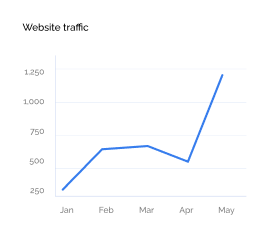Improving your Google rankings is essential for driving organic traffic to your website. While SEO has evolved significantly since Google’s inception in 1998, the fundamentals remain consistent. With personalized search results influenced by user behavior, location, and device, standing out has become more challenging.
But one thing is clear: your organic traffic depends on your search engine ranking positions (SERPs). If your keywords rank high, traffic will flow effortlessly. Struggling to attract visitors? You may need to adjust your strategy.
Let’s dive into nine actionable steps you can take to boost your rankings.

1. Start With A Rock-Solid Technical Foundation
A poorly structured website can harm even the most robust SEO efforts. Make sure your site is easy for both users and search engines to navigate.
Key Priorities:
- Streamline navigation to ensure users can access any page within three clicks.
- Secure your site with HTTPS to build trust and protect data.
- Optimize load times by compressing images and reducing unnecessary code.
- Fix crawl errors using tools like Google Search Console.
Quick Tip: Audit your website today. Fix broken links or slow-loading pages and recheck your progress in two weeks.
2. Deliver High-Quality, Relevant Content
Google rewards content that satisfies user intent and offers value. Focus on creating pieces that solve problems and answer real questions.
How to Make Your Content Shine:
- Write engaging titles that grab attention.
- Craft meta descriptions that align with searcher intent.
- Back your claims with expert sources or case studies.
Pro Tip: Update underperforming pages with fresh insights or new sections. Watch for improved engagement metrics like time on page.
3. Optimize Your Pages For Google
SEO-friendly pages don’t just happen; they’re crafted with care. From titles to internal links, every detail matters.
Key Optimization Strategies:
- Create concise, descriptive titles under 60 characters.
- Write unique meta descriptions that naturally include keywords.
- Use internal links to guide users and improve crawlability.
Action Step: Rewrite the meta descriptions for three underperforming pages and add at least one internal link to each.
4. Use Schema Markup for Rich Results
Schema markup helps search engines understand your content and display rich results, such as star ratings or pricing details.
Getting Started:
- Use Google’s Structured Data Markup Helper to generate schema code.
- Validate your code with the Google Rich Results Test.
Why It Works: Schema markup can boost your visibility, increase click-through rates, and improve user experience.
5. Prioritize Mobile Optimization
Google now uses mobile-first indexing, so your site must perform well on smaller screens.
Mobile-Friendly Musts:
- Use responsive design to ensure seamless viewing on all devices.
- Optimize page speed by compressing images and enabling lazy loading.
- Simplify navigation for mobile users.
Try This: Check Google Search Console’s Mobile Usability report and fix issues like small text or closely spaced buttons.
6. Build High-Quality Backlinks
Backlinks remain a cornerstone of SEO. Focus on acquiring links from reputable, high-authority websites.
How to Earn Backlinks:
- Pitch guest posts to industry-relevant blogs.
- Create shareable, valuable content that naturally attracts links.
Warning: Avoid black-hat tactics. Focus on quality over quantity to maintain credibility.
7. Keep Content Fresh
Outdated content can hurt your rankings. Regularly updating your site signals relevance and authority.
Simple Ways to Refresh Content:
- Update old statistics with the latest data.
- Add new insights or multimedia elements like videos and infographics.
- Expand existing content with FAQs or case studies.
Quick Win: Identify two high-performing pages and update them with fresh data or visuals.
8. Enhance Local SEO
For businesses with physical locations, local SEO is a game-changer.
Steps to Improve Local Visibility:
- Optimize your Google Business Profile (GBP) with accurate details.
- Incorporate location-specific keywords into your content.
- Encourage satisfied customers to leave positive reviews.
Pro Tip: Add three new photos to your GBP and refine your business categories.
9. Optimize for International Audiences
If you cater to global users, international SEO is vital.
What to Do:
- Use hreflang tags to specify language and regional targeting.
- Localize content by translating text and adapting cultural nuances.
- Research regional keywords for better alignment.
Next Step: Translate your highest-performing page into one additional language and monitor international traffic.
Final Thoughts
SEO success doesn’t happen overnight. By implementing even a few of these strategies, you’ll start seeing gradual improvements in your rankings. Track your progress using tools like Google Analytics and Search Console, and refine your approach based on the results.
Remember, the fundamentals of SEO remain the same. Focus on creating high-quality, user-focused content and a technically sound website, and you’ll be on the right track.


